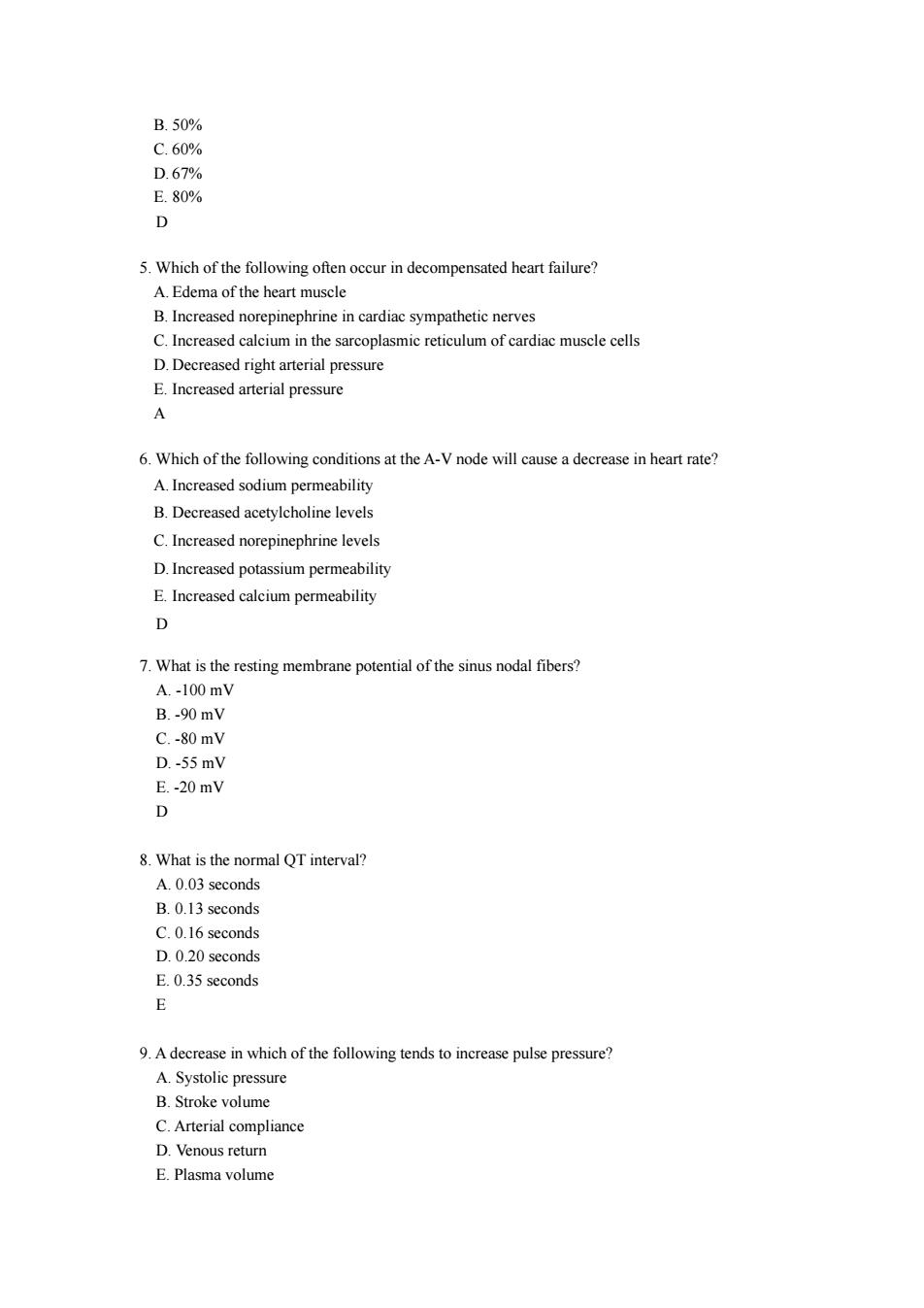正在加载图片...

B.50% C60% D 5.Which of the following often occur in decompensated heart failure? A.Edema of the heart muscle B.Increased nore incardiac sympathetic nerve D.Decreased right arterial pressure E.Increased arterial pressure 4 6.Which of the following conditions at the A-V node will cause a decrease in heart rate? A.Increased sodium permeability B.Decreased acetylcholine levels C.Increased norepinephrine leve D.Increased potassium permeability E.Increased calcium permeability D 7.What is the resting membrane potential of the sinus nodal fibers? A.-100mV B-90mV C.-80mV D.-55 mV E.-20 mV D 8.What is the normal QT interval? A..03 seconds B.0.13 seconds C.0.16 seconds D.0.20 seconds E 0.35 seconds 9.Adecrease in which of the following tends to increase pulse pressure? A.Systolic pressure B.Stroke volume C.Arterial compliance D.Venous retur E.Plasma volume B. 50% C. 60% D. 67% E. 80% D 5. Which of the following often occur in decompensated heart failure? A. Edema of the heart muscle B. Increased norepinephrine in cardiac sympathetic nerves C. Increased calcium in the sarcoplasmic reticulum of cardiac muscle cells D. Decreased right arterial pressure E. Increased arterial pressure A 6. Which of the following conditions at the A-V node will cause a decrease in heart rate? A. Increased sodium permeability B. Decreased acetylcholine levels C. Increased norepinephrine levels D. Increased potassium permeability E. Increased calcium permeability D 7. What is the resting membrane potential of the sinus nodal fibers? A. -100 mV B. -90 mV C. -80 mV D. -55 mV E. -20 mV D 8. What is the normal QT interval? A. 0.03 seconds B. 0.13 seconds C. 0.16 seconds D. 0.20 seconds E. 0.35 seconds E 9. A decrease in which of the following tends to increase pulse pressure? A. Systolic pressure B. Stroke volume C. Arterial compliance D. Venous return E. Plasma volume